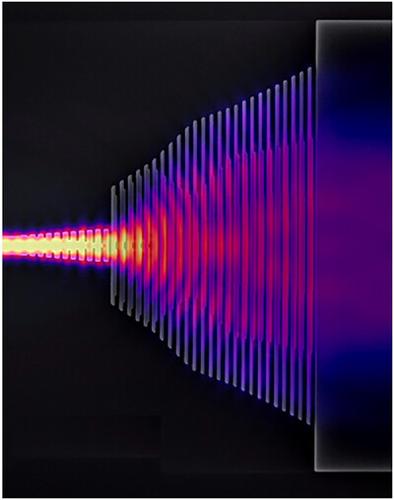Ultra‐Compact Broadband Spot Size Converter Using Metamaterial Cell‐Based Inverse Design
IF 10
1区 物理与天体物理
Q1 OPTICS
引用次数: 0
Abstract
With the expansion of silicon photonics from datacom applications into emerging fields like optical I/O, quantum and programmable photonics, there is an increasing demand for devices that combine ultra‐compact footprints, low losses, and broad bandwidths. While inverse design techniques have proven very efficient in achieving small footprints, they often underutilize physical insight and rely on large parameter spaces that are challenging to explore, thereby limiting the performance of the resulting devices. Here a design methodology is presented that combines inverse design with a topology based on cells, each of which contains a subwavelength metamaterial. This approach significantly reduces the parameter space, while the inherent anisotropy of the subwavelength structures yields shorter devices. This technique is experimentally demonstrated with an ultra‐compact spot size converter that achieves a 24 expansion ratio times (from 0.5 to 12 ) over a length of only 7.2 , with insertion losses of 0.8 dB across a measured bandwidth of 160 nm (up to 300 nm in simulation), surpassing the state‐of‐the‐art by a wide margin.

基于超材料电池逆设计的超紧凑宽带光斑尺寸转换器
随着硅光子学从数据通信应用扩展到光学I/O、量子和可编程光子学等新兴领域,对超紧凑、低损耗和宽带相结合的器件的需求不断增加。虽然逆向设计技术已被证明在实现小尺寸方面非常有效,但它们通常未充分利用物理洞察力,并依赖于具有挑战性的大参数空间,从而限制了最终设备的性能。本文提出了一种设计方法,将逆设计与基于细胞的拓扑结构相结合,每个细胞都包含一个亚波长超材料。这种方法大大减少了参数空间,而亚波长结构固有的各向异性产生了更短的器件。该技术通过一个超紧凑的光斑尺寸转换器进行了实验验证,该转换器在长度仅为7.2的情况下实现了24倍的扩展比(从0.5到12),在测量带宽为160 nm(模拟中高达300 nm)的范围内插入损耗为0.8 dB,远远超过了目前的技术水平。
本文章由计算机程序翻译,如有差异,请以英文原文为准。
求助全文
约1分钟内获得全文
求助全文
来源期刊
CiteScore
14.20
自引率
5.50%
发文量
314
审稿时长
2 months
期刊介绍:
Laser & Photonics Reviews is a reputable journal that publishes high-quality Reviews, original Research Articles, and Perspectives in the field of photonics and optics. It covers both theoretical and experimental aspects, including recent groundbreaking research, specific advancements, and innovative applications.
As evidence of its impact and recognition, Laser & Photonics Reviews boasts a remarkable 2022 Impact Factor of 11.0, according to the Journal Citation Reports from Clarivate Analytics (2023). Moreover, it holds impressive rankings in the InCites Journal Citation Reports: in 2021, it was ranked 6th out of 101 in the field of Optics, 15th out of 161 in Applied Physics, and 12th out of 69 in Condensed Matter Physics.
The journal uses the ISSN numbers 1863-8880 for print and 1863-8899 for online publications.

 求助内容:
求助内容: 应助结果提醒方式:
应助结果提醒方式:


